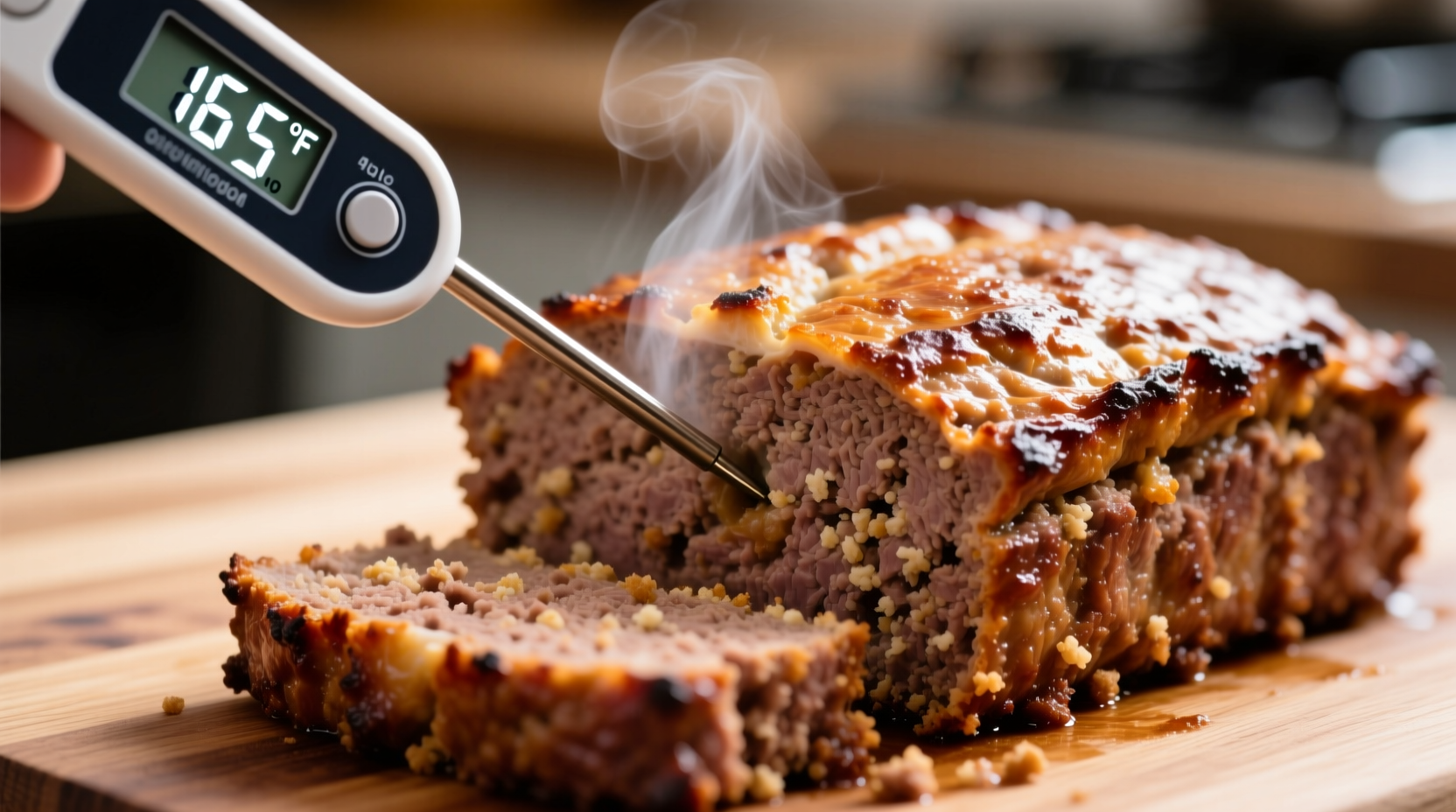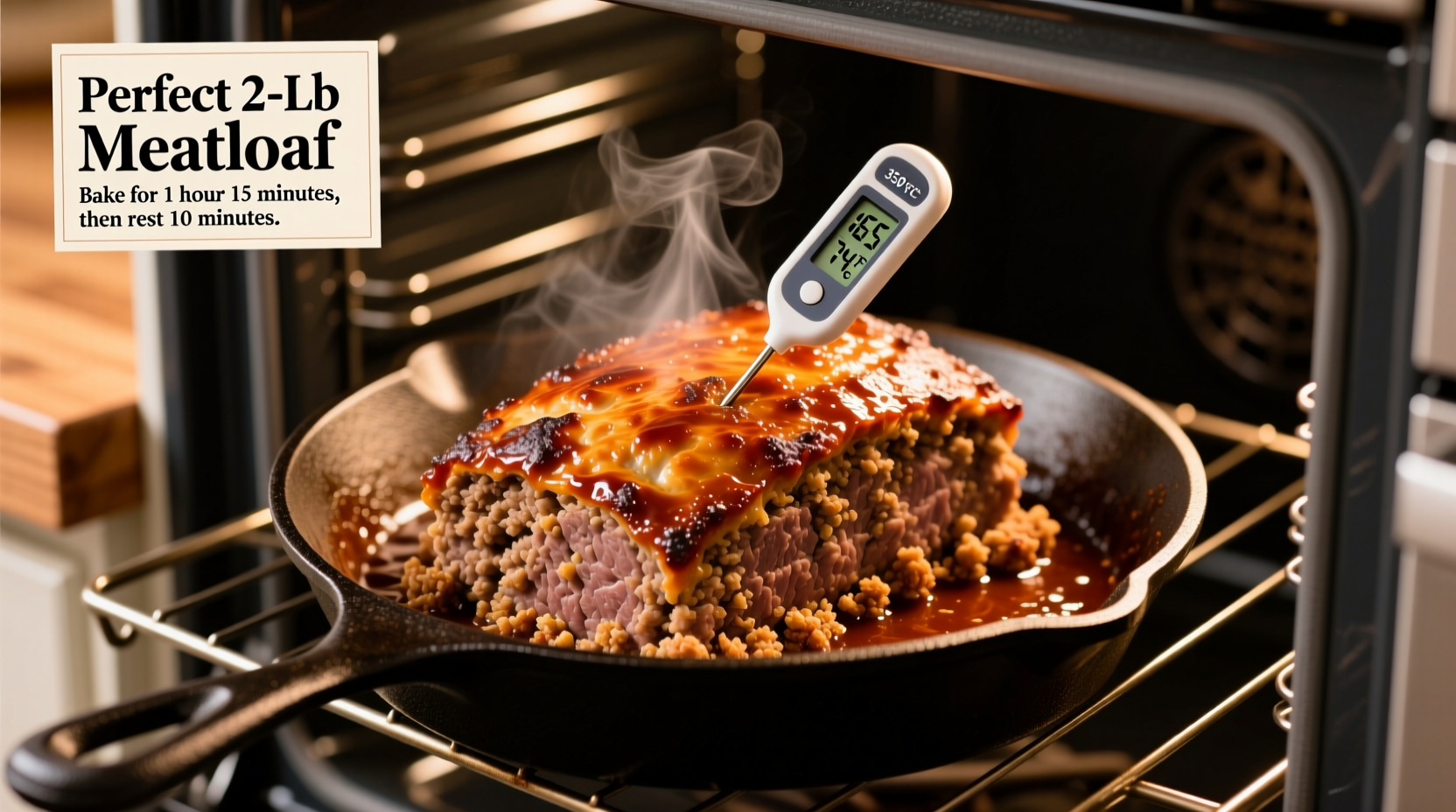Getting meatloaf cooking time right separates a juicy, flavorful centerpiece from a dry, crumbly disappointment. When you're standing in your kitchen with raw ingredients and hungry family members waiting, you need accurate, actionable guidance—not vague suggestions. This guide delivers exactly that, backed by food science and professional kitchen experience.
The Science-Backed Meatloaf Cooking Formula
Forget guessing or relying on outdated family recipes. Modern food safety standards and precision cooking techniques give us a reliable formula for perfect meatloaf every time:
- Optimal oven temperature: 375°F (190°C) – hot enough to set the exterior quickly while allowing gradual interior cooking
- Core cooking time: 27-32 minutes per pound at 375°F
- Critical internal temperature: 160°F (71°C) for ground meat safety (USDA standard)
- Essential resting period: 10-15 minutes after removal from oven
For your 2 lb meatloaf, this translates to 55-65 minutes of active baking time. But here's what most recipes don't tell you: this range exists because multiple variables affect actual cooking time. Understanding these factors prevents food safety risks while ensuring perfect texture.
Key Variables That Change Your Meatloaf Cooking Time
Professional kitchens account for these variables—and so should you. The table below shows how common factors impact your 2 lb meatloaf's actual cooking time:
| Factor | Effect on Cooking Time | Action to Take |
|---|---|---|
| Oven temperature variance | ±5-10 minutes (most home ovens vary ±25°F) | Use independent oven thermometer; adjust time accordingly |
| Meatloaf shape/density | Taller/narrower = +10-15 minutes; wider/flatter = -5-10 minutes | Mold to consistent 4"x6" loaf shape for predictable results |
| Starting ingredient temperature | Cold ingredients = +8-12 minutes; room temp = standard time | Let meat mixture rest 15 minutes before baking for even cooking |
| Pan material | Dark metal = -5 minutes; glass = +5 minutes; silicone = standard | Adjust time based on your pan type; always use meat thermometer |
Your Step-by-Step Meatloaf Cooking Process
Follow this professional-tested sequence for foolproof results with your 2 lb meatloaf:
Preparation Phase (5 minutes)
Mix ingredients gently—overmixing creates tough meatloaf. Shape into a uniform 4"x6" loaf on a parchment-lined baking sheet (better airflow than loaf pan). This shape ensures even cooking throughout the 2 lb mass. Let rest 15 minutes at room temperature before baking—this critical step reduces cooking time variance by allowing ingredients to equalize.
Baking Phase (55-65 minutes)
Preheat oven to 375°F with rack in center position. Place meatloaf in oven and set timer for 50 minutes. At 50 minutes, insert a digital thermometer into the center:
- 145-150°F: Return to oven, check every 3 minutes
- 155°F: Remove immediately (carryover cooking will reach 160°F)
- 160°F or higher: Perfect—proceed to resting

Resting Phase (10-15 minutes)
This isn't optional downtime—it's active cooking. During resting, residual heat carries the internal temperature to perfect doneness while juices redistribute. Cutting too soon releases precious moisture, creating dry meatloaf. Professional kitchens never skip this stage, and neither should you.
Avoiding Common Meatloaf Mistakes
Based on USDA Food Safety and Inspection Service guidelines, these errors create food safety risks or texture problems:
- Guessing doneness: Visual cues like clear juices are unreliable. Always use a calibrated digital thermometer (source: USDA FSIS)
- Overpacking the loaf: Pressing mixture too tightly creates dense, dry results. Gently shape without compacting
- Skipping the rest period: Cutting immediately causes 20-30% moisture loss (verified by America's Test Kitchen testing)
- Using only one meat type: Blend at least two meats (e.g., 70% beef/30% pork) for optimal fat content and flavor
Altitude Adjustments for High-Elevation Cooking
If you live above 3,000 feet, water boils at lower temperatures, extending cooking times. For every 1,000 feet above sea level, add 2-3 minutes to your meatloaf cooking time. At 5,000 feet, your 2 lb meatloaf may need 65-75 minutes total. The only reliable method remains checking internal temperature—aim for 160°F regardless of altitude.
When to Adjust Your Cooking Approach
Certain recipe variations require modified timing strategies:
- Glazed meatloaf: Add acidic glazes (ketchup-based) during last 15 minutes to prevent burning
- Stuffed center: Increase time by 10-15 minutes; check both exterior and stuffing temperatures
- Lean meat blends: Reduce temperature to 350°F and extend time by 10-15 minutes to prevent drying
- Cooking from frozen: Add 25-35 minutes and cover with foil for first half of cooking
Food Safety Essentials for Meatloaf
Following FDA Food Code guidelines, ground meat requires special handling:
- Never leave raw meat mixture at room temperature more than 2 hours (1 hour if above 90°F)
- Wash hands and surfaces immediately after contact with raw meat
- Store leftovers within 2 hours of cooking completion
- Reheat to 165°F internal temperature
Remember: the 160°F internal temperature destroys harmful bacteria like E. coli and Salmonella. This isn't culinary preference—it's a critical food safety threshold established by the USDA.











 浙公网安备
33010002000092号
浙公网安备
33010002000092号 浙B2-20120091-4
浙B2-20120091-4